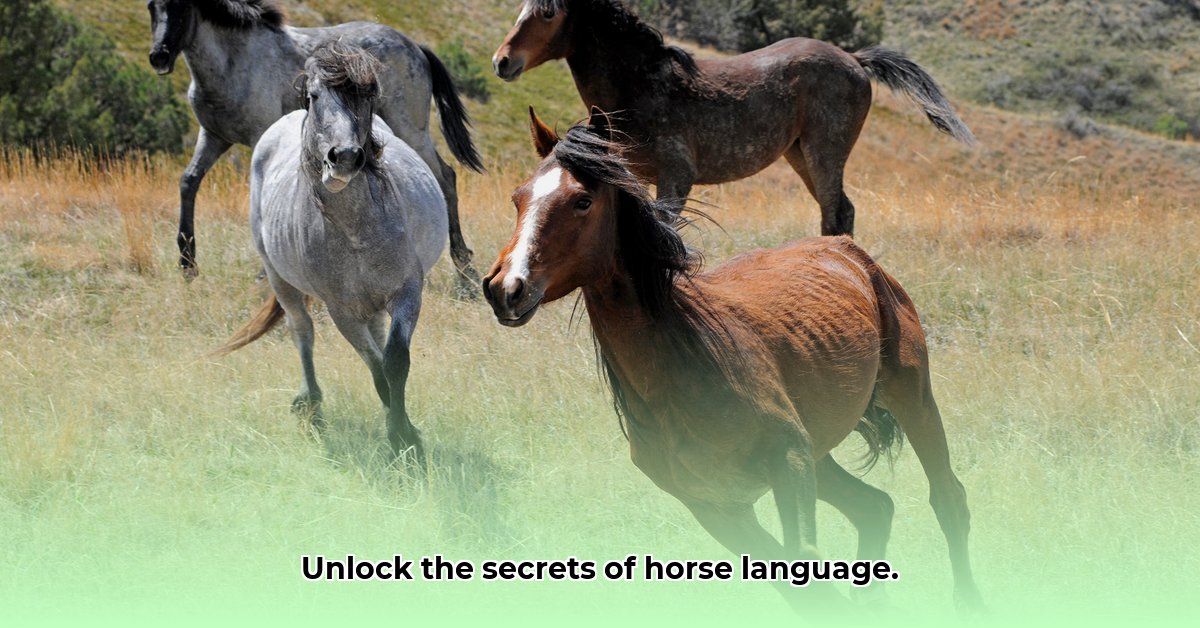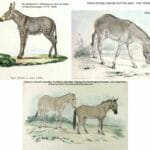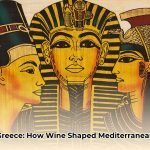Have you ever considered the diverse terminology used to describe groups of horses? Beyond the common term “herd,” a variety of words each carry distinct historical and contextual meanings. This article delves into these terms, exploring their usage, history, and cultural relevance, enhancing your understanding of equine groups and their intricate social dynamics. While the term “herd” is acceptable, there are more descriptive alternatives.
Beyond the Herd: A Comprehensive Look at Equine Terminology
While “herd” serves as a general term, numerous other words offer nuanced descriptions of horse gatherings. The appropriate term often hinges on the specific context, whether it’s a wild band roaming freely or a team of horses collaborating on a task. The language used reflects not only the social lives of these animals but also humanity’s longstanding relationship with them.
Expanding Your Equine Vocabulary: Alternatives to “Herd”
Let’s explore some alternative terms that add greater precision and color to descriptions of horse groups:
- Band: Typically refers to a smaller, closely-knit group within a larger herd, often a family unit. This term is often used when referring to wild horses on open land.
- Stud: Specifically denotes a group of male horses maintained for breeding purposes, highlighting their reproductive role.
- Team: Describes horses working together, whether pulling a carriage, plowing a field, or participating in a competition, emphasizing their cooperative efforts.
- String: Used to describe horses owned by a single individual, reflecting ownership and management.
- Troop: Historically associated with cavalry units, evoking images of mounted soldiers and military organization.
- Harras: A term, though less commonly used today, denotes a stud farm, particularly in French-speaking regions, adding a touch of historical and geographical context.
There are numerous regional variations and archaic terms that have gradually fallen out of favor. The terminology used to describe groups of horses often reveals historical and cultural insights.
The Significance of Accurate Terminology
Using the correct term transcends mere linguistic accuracy; it’s vital for clear communication and deeper comprehension of the equine world.
For equine scientists, precise language is essential for accurate data collection and analysis, facilitating meaningful comparisons across studies. Horse breeders rely on precise communication to effectively manage breeding programs. Clear and unambiguous language is essential in all aspects of equine-related activities to prevent potential misunderstandings. “Without precise language in the scientific community, research will be limited and findings can easily be misconstrued,” said Dr. Samantha Johnson, Professor of Equine Science at the University of Kentucky.
A Linguistic History: The Evolution of Terminology
Equine terminology is not static; it evolves in tandem with societal perspectives, cultural shifts, and technological advancements. The language used to describe horses reflects humanity’s evolving relationships with these animals. The ongoing evolution of equine terminology promises further insights into our relationship with these animals.
Context is Key: Selecting the Right Term
Here’s a table illustrating how context influences the most appropriate word choice:
| Context | Possible Words | Why That Word Fits |
|---|---|---|
| Wild Mustangs on a Prairie | Herd, Band | Conveys a large, loosely-organized group or a smaller family unit. |
| High-Stakes Racehorses | String (if owned by one person), Stable | Highlights ownership or centralized location. |
| Horses Pulling a Wagon | Team, Draft Team | Emphasizes collaborative work. |
| Breeding Stallions in a Farm | Stud | Clearly indicates the purpose of the group. |
| Cavalry Horses in History | Troop (historically), Squadron (more modern) | Emphasizes the military context and organizational structure. |
| Horses in a French Breeding Farm | Harras | Specifically refers to a stud farm, particularly one historically located in a French-speaking region. |
This table is not exhaustive; numerous other terms may apply depending on the context. Increased awareness of subtle differences in meaning enhances the comprehension of horses and their role in human society.
Precise language fosters clear communication and enriches appreciation for the equine world. The next instance you observe a group of horses, consider the most fitting descriptor, enhancing comprehension of these magnificent animals and their complex social lives.
How to Choose the Best Collective Noun for a Group of Horses
Key Takeaways:
- The most common term is “herd,” suitable for most situations.
- Context matters: consider the horses’ environment, activity, and social structure.
- Many alternative terms exist, each with subtle differences in meaning.
- Careful word choice evokes specific images and feelings.
- Understanding these nuances enhances communication about horses.
Beyond the Herd: A Deeper Dive into Equine Group Terminology
While “herd” is widely used for a group of horses, selecting the right collective noun can add precision to your communication. The deliberate choice of a collective noun can transform a description, and convey specific information regarding the environment, activity, and social structure of the horses.
Factors Influencing Your Choice
Several factors influence the best term to use:
- Environment: Are the horses freely roaming in a wild pasture (“band”) or a carefully managed paddock (“stable”)?
- Activity: Is it a group of racehorses (“string”), a team of draft horses (“team”), or a collection of stallions at stud (“stud”)?
- Social Structure: A family group behaves distinctly from a mixed-age group. Terms like “rag” often refer to a group of bachelor stallions.
- Historical Context: Some terms, such as “harras,” are historically loaded and more suitable for historical accounts than modern contexts.
A Guide to Collective Nouns
| Collective Noun | Description | Appropriateness |
|---|---|---|
| Herd | The most common term, suitable for most situations. | Wide applicability, universally understood. |
| Team | Horses working collaboratively under human direction. | Best for working or competition animals. |
| Stable | Horses housed together in a stable. While commonly used, not strictly a collective noun, but refers to place. | More descriptive of location than of a group’s inherent characteristics. |
| Stud | A group of breeding stallions. | Specific to breeding contexts. |
| String | Often refers to a group of racehorses or horses being managed together. | Primarily associated with racing and training contexts. |
| Band | Often used for groups of wild horses. | More evocative of wild, free-roaming groups. |
| Muster | A group of horses gathered together, often implies a large number. | Suggests a deliberate gathering, potentially for moving or inspection. |
| Rag | A group of bachelor stallions. | Conveys a specific social dynamic. |
| Troop | A group of horses in military service. | Highlights their role in historical or ceremonial military units. |
| Harras | A stud farm, especially in French-speaking regions. | Adds a historical and geographical dimension, particularly when discussing breeding farms with a French heritage. |
Making the Right Choice
Consider the kind of image you’re trying to create. “Herd” suggests the natural, perhaps untamed. “Team” indicates collaboration. The right word will help paint a better picture of horses.
Choosing the right collective noun is an art enhancing equine descriptions. Considering the nuances will give a new perspective to readers
Understanding Equine Group Dynamics in Different Geographic Locations
Key Takeaways:
- Equine herd structures vary based on geography, impacting social interactions and overall herd health.
- Understanding Equine Group Dynamics in Different Geographic Locations is crucial for responsible horse management.
- Environmental factors and human intervention significantly influence herd dynamics.
- Different breeds display unique social behaviors within their herd structures.
- Research into equine social structures provides valuable insights into horse welfare.
Herd Structure Variations: A Global Perspective
Equine social lives are complex and influenced by habitat. A herd thriving on a vast Mongolian steppe confronts different challenges than one in a confined Kentucky pasture. These geographic variations impact herd structure, behavior, leadership roles, and conflict resolution.
Herd size often aligns with available resources. Ample grazing supports larger herds, while limited resources result in smaller groups. Some herds are mobile, seeking fresh pastures, while others remain stationary. This mobility shapes internal dynamics and survival strategies.
Communication and Social Hierarchy
Horses use body postures, expressions, vocalizations, and scent to maintain social order. Their communication methods depend on population density; horses in dense areas use visual signals, while those in open spaces use scent marking.
Dominance hierarchies often center on older, experienced mares, guiding herd movements and decisions. Stallions primarily protect herds from external threats, rather than dictating internal social structure. This dynamic varies: solitary stallions in isolated areas behave differently from those in larger herds, said Dr. Emily Carter, Equine Behavior Specialist and Researcher at Colorado State University.
The Impact of Human Intervention
Human intervention shapes herd dynamics, especially in domestic settings. Pasture allotments, herd introductions, and training methodologies impact social interactions and well-being. Poor management can cause
















